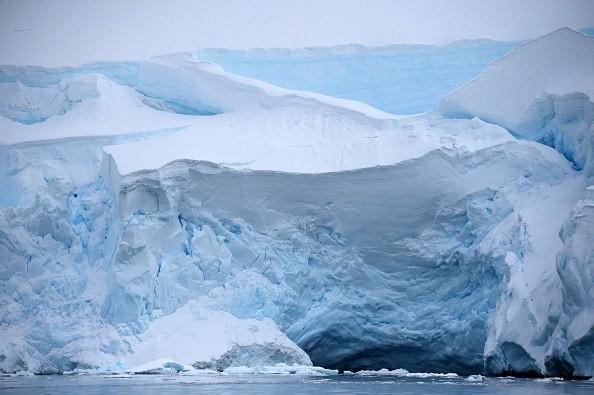An enormous chunk of ice the size of Philadelphia broke off the Larsen-B glacier on the Antarctic Peninsula in just three days in late January and floated away.
Between January 19 and 21, NASA satellites captured the breakup, and with it saw the calving of icebergs from Crane Glacier and its neighbors when the sea ice no longer supported their fronts.

The Vulnerability of Antarctic Glacier
According to Phys.org, the glaciers that line the Antarctic Peninsula are now more vulnerable to melting and accelerating into the ocean, which could directly lead to the rise in sea level.
The Larsen Ice Shelf is located in the Weddell Sea, on the northeastern side of the Antarctic Peninsula. There are four separate embayments that stretch north to south along the shoreline, each of which has seen its own transformation over the past few decades. Many glaciers that would otherwise flow down the steep hillsides and into the sea are being held back by the massive ice shelf.
In 1995, Larsen-A disintegrated, followed by Larsen-B in 2002, which partially collapsed. When a massive iceberg, designated A68, calved from Larsen-C in July 2017, it drew worldwide attention to the Antarctic region. Since it's the furthest south and therefore less susceptible to warming, Larsen-D is the only part that can be deemed stable.
Larsen B ice shelf lost 3,250 square kilometers of ice in 2002 as a result of subsurface melting caused by warmer ocean temperatures and the accumulation of meltwater on its surface. A much smaller and more unstable segment had been left over from when everything had fallen apart. Allowing glaciers on land to flow more quickly, it became thinner.
However, it wasn't until 2011 that sea ice formed in the newly opened area, and it didn't melt until the following spring. Due to remnant ice shelves and sea ice that was permanently and tightly linked to land, glaciers were partly stabilized from 2011 to 2022.
However, NASA's Terra and Aqua satellites captured a three-day span in January in which this enormous expanse was fractured.
Loss of Sea Ice
The massive glaciers that were supported by the ice in the Larsen-B embayment are now exposed to the sea due to the recent breakup of the ice there. Glaciers, unlike sea ice and ice shelf melt, actively contribute to sea level rise, as per News Beezer.
However, although the original Larsen-B ice shelf no longer exists, sea ice frozen to land has played an important role in reducing Antarctica's contribution to sea level rise over the last decade. It is not as effective as holding back glacier flow as the original ice shelf.
A new study published at the same time as scientists watched Larsen-B break up describes the life cycle of the massive iceberg that calved from Larsen-C in 2017 known as A68.
During its first break off the ice shelf, it was the sixth largest iceberg ever observed by satellites, roughly the size of Delaware. After 3.5 years of existence, A68 disintegrated in the South Georgia Islands east of the southern tip of South America in January 2021, resulting in its demise.
Anne Braakmann-Folgmann, the study's primary author and an expert on A68, adds that when A68 calved, it reduced the remaining ice shelf area by a significant amount [and] Larsen-A and -B had already collapsed. There has been no change in the stability of Larsen-C since 2017, when the icebergs began calving.
Larsen Ice Shelf May Occur More Often
Significant occurrences on the Larsen ice shelf are expected to occur more regularly as the climate warms.
Tracking each portion of Larsen Ice Shelf, scientists can chronicle ice shelf collapse, an increase of sea-ice, and long-lasting icebergs that endanger faraway locations, such as Antarctica and Greenland.
Questions abound about how long the Larsen-D portion will remain stable as the earth warms. However, it has been shielded from the effects of climate change thus far due to its proximity to the South Pole.
Emissions reductions are critical for the Antarctic Peninsula ice as well as the continent's two other ice sheets, East and West Antarctica.
For more news, updates about sea ice and similar topics don't forget to follow Nature World News!
© 2025 NatureWorldNews.com All rights reserved. Do not reproduce without permission.





